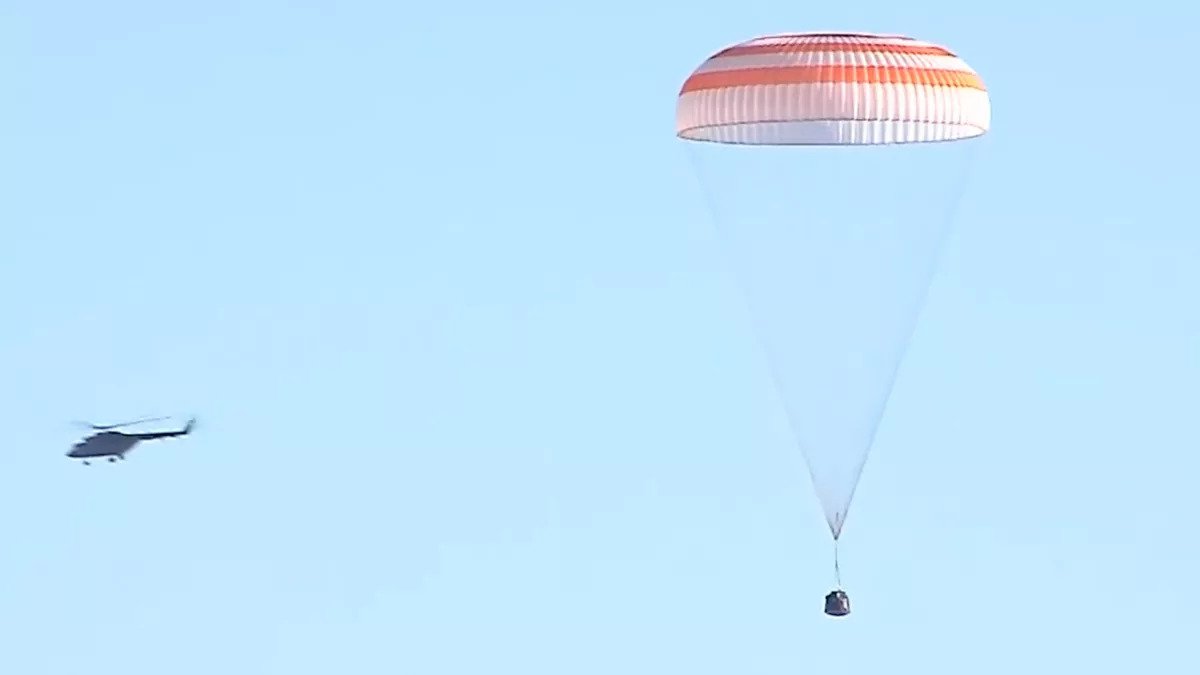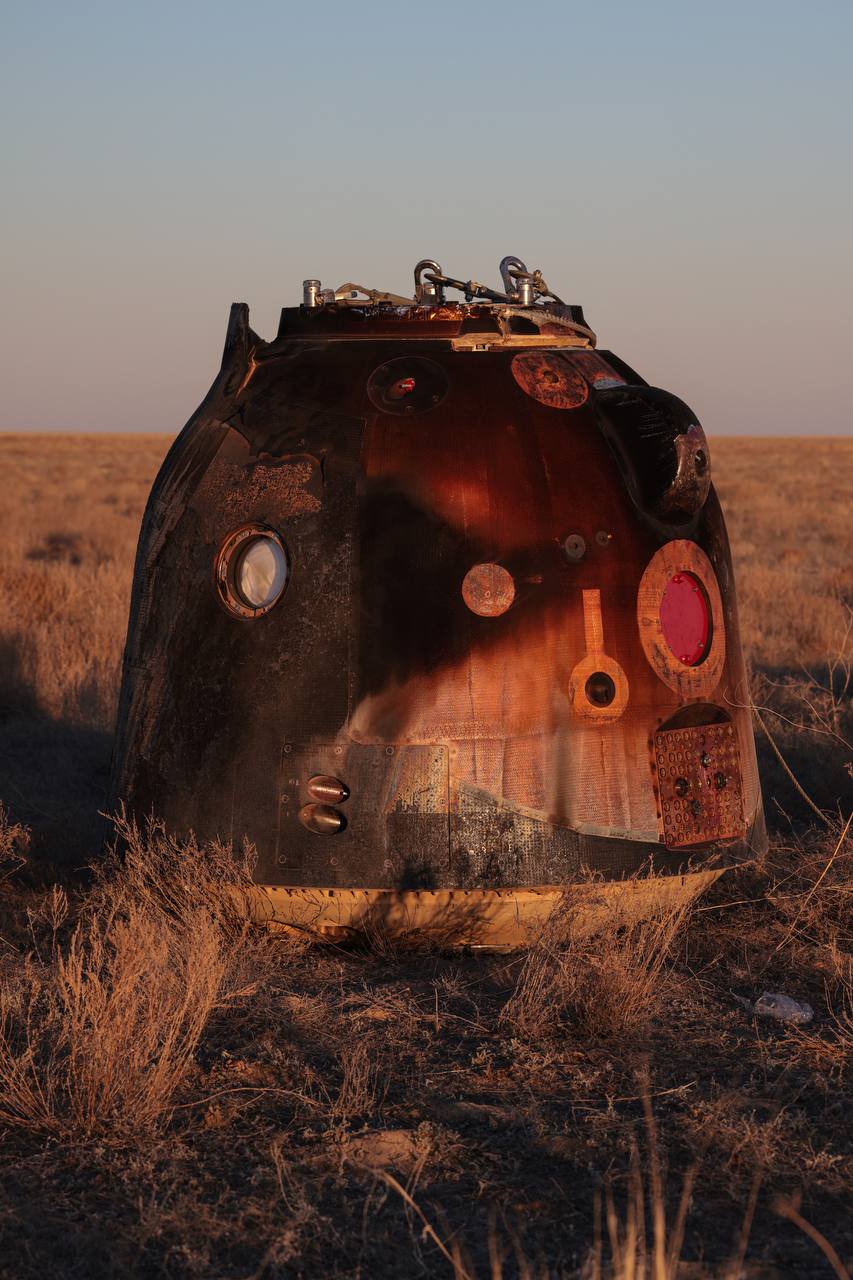The Russian Soyuz MS-22 spacecraft, the coolant leak from which caused the crisis on the International Space Station, has descended from orbit. Its charred descent vehicle turned out to be in the middle of the Kazakh steppe.

The most problematic Russian spacecraft
The Soyuz MS-22 spacecraft, which caused a lot of problems this winter due to the fact that the cooler began to leak out of it, finally completed its flight to the steppe. It began in September 2022, when Russian cosmonauts Sergey Prokopyev and Dmitri Petelin, as well as American astronaut Frank Rubio, arrived at the International Space Station on it.
It was planned that they would return by the same spacecraft. However, on December 14, about three months after the launch, a liquid leak from the cooling system occurred at Soyuz. This threatened the crew with overheating when entering the atmosphere.
Then Roscosmos was looking for a way to repair the condition of the spacecraft, saying that the cause was a micrometeorite. In the end, it was not possible to repair it and they announced that they would launch a new one to the station. Meanwhile, a similar problem occurred on the Progress cargo spacecraft and it became clear that these were some problems when assembling the spacecraft on Earth.
Finally, on February 23, Russia sent another spacecraft to the station, because the astronauts were trapped. Now it is planned that Prokopyev, Petelin and Rubio will return to Earth on it only in August of this year. Thus, instead of the planned six months in orbit, they will stay there for a year.
Soyuz in Kazakhstan
It was decided to take the unlucky Soyuz MS-22 out of orbit and land its descent vehicle in Kazakhstan. About 218 kg of experimental results and valuable cargo were returned to Earth on it. But it is not reported what they are.

On March 8, at 11.57 a.m., GMT+3, the Soyuz was undocked from the station. It usually takes about 2.5 hours from this moment to re-enter the atmosphere. However, this time the spacecraft was flying without a crew, so the descent began after 55 minutes.
When entering the dense layers of the atmosphere, the spacecraft, as usual, separated. Most of it burned down completely, leaving only a heavily burned descent vehicle, but still managed to open the parachute, as the Russian media proudly stated. Obviously, there was no certainty that the capsule would not crash into the Earth at full speed.
Now engineers should open the “smoked” descent vehicle and find out about the actual temperatures inside when entering the atmosphere and how it can threaten astronauts.
According to www.space.com
Follow us on Twitter to get the most interesting space news in time
https://twitter.com/ust_magazine

